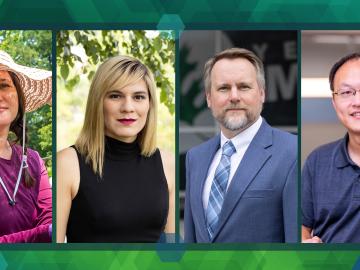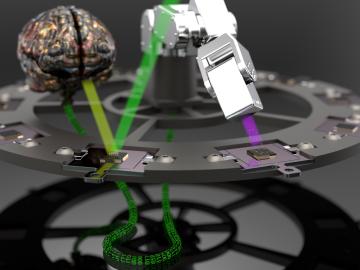Filter News
Area of Research
Date
News Topics
- 3-D Printing/Advanced Manufacturing (10)
- Advanced Reactors (3)
- Artificial Intelligence (22)
- Big Data (8)
- Bioenergy (10)
- Biology (11)
- Biomedical (5)
- Biotechnology (5)
- Buildings (13)
- Chemical Sciences (12)
- Clean Water (3)
- Climate Change (19)
- Composites (4)
- Computer Science (17)
- Critical Materials (3)
- Decarbonization (19)
- Education (1)
- Emergency (1)
- Energy Storage (8)
- Environment (18)
- Exascale Computing (5)
- Fossil Energy (2)
- Frontier (6)
- Fusion (4)
- Grid (7)
- High-Performance Computing (13)
- Isotopes (10)
- ITER (1)
- Machine Learning (8)
- Materials (13)
- Materials Science (12)
- Mathematics (2)
- Microscopy (2)
- Nanotechnology (2)
- National Security (13)
- Net Zero (5)
- Neutron Science (9)
- Nuclear Energy (7)
- Partnerships (10)
- Physics (2)
- Polymers (5)
- Quantum Computing (8)
- Quantum Science (10)
- Security (2)
- Simulation (11)
- Space Exploration (3)
- Statistics (2)
- Summit (4)
- Sustainable Energy (16)
- Transportation (10)
Media Contacts

Sara Martinez ensures the safety and longevity of aging structures at Oak Ridge National Laboratory, employing her engineering expertise to protect against natural disasters and extend the lifespan of critical facilities.

An Oak Ridge National Laboratory team revealed how chemical species form in a highly reactive molten salt mixture of aluminum chloride and potassium chloride by unraveling vibrational signatures and observing ion exchanges.

Six firms received Small Business Awards from the Department of Energy’s Oak Ridge National Laboratory. The companies, selected from small business service providers to the lab, were recognized by ORNL's Small Business Programs Office for their specific capabilities and contributions.

Anuj J. Kapadia, who leads the Advanced Computing in Health Sciences Section at the Department of Energy’s Oak Ridge National Laboratory, was named a 2024 Fellow by the American Association of Physicists in Medicine.

Phani Ratna Vanamali Marthi, an R&D associate in the Power Systems Resilience group at ORNL, has been elevated to the grade of senior member of the Institute of Electrical and Electronics Engineers, the world’s largest technical professional organization

Researchers at Oak Ridge National Laboratory have developed free data sets to estimate how much energy any building in the contiguous U.S. will use in 2100. These data sets provide planners a way to anticipate future energy needs as the climate changes.

Four ORNL scientists started their professional careers as staff scientists in the Distinguished Staff Fellowship program, a highly competitive, prestigious program for young scientists to begin a lifetime vocation in research at the lab.

Today, scientific discovery is accelerated by automated experiments, artificial intelligence and high-performance computing. A novel tool developed at ORNL that leverages those technologies has demonstrated that AI can influence materials synthesis and conduct associated experiments without human supervision.

When the Department of Energy’s Oak Ridge National Laboratory science mission takes staff off-campus, the lab’s safety principles follow. That’s true even in the high mountain passes of Washington and Oregon, where ORNL scientists are tracking a tree species — and where wildfires have become more frequent and widespread.

Purdue University hosted more than 100 attendees at the fourth annual Quantum Science Center summer school. Students and early-career members of the QSC —headquartered at ORNL — participated in lectures, hands-on workshops, poster sessions and panel discussions alongside colleagues from other DOE National Quantum Information Science Research Centers.




